#secure salesforce org
Explore tagged Tumblr posts
Text
Salesforce Security Best Practices for Admins in 2025
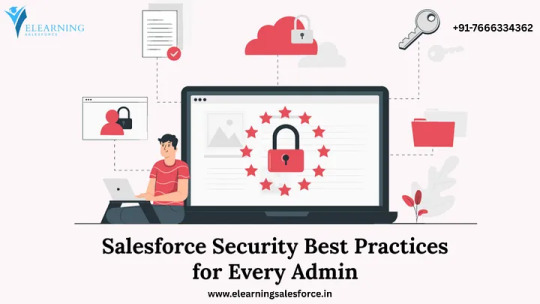
Discover the top Salesforce security best practices every admin must follow in 2025. Learn how to safeguard your org with the latest tools, user access controls, MFA, and more. A must-read guide to help protect sensitive business data in an evolving digital landscape.
#SalesforceAdmin#SalesforceSecurity#CyberSecurity2025#AdminBestPractices#SalesforceTips#MFA#UserAccessControl#CloudSecurity#SecureYourOrg#SalesforceTraining#SalesforceCRM#DataProtection#Salesforce2025#ZeroTrust#SalesforceCommunity
0 notes
Text
Salesforce Security Best Practices for Admins in 2025
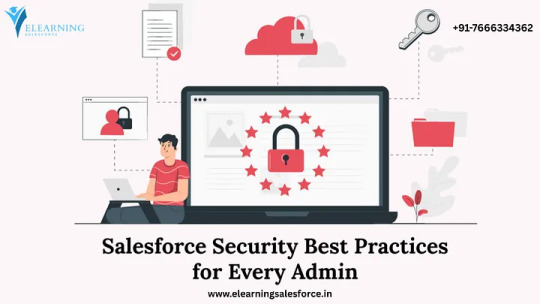
Discover the top Salesforce security best practices every admin must follow in 2025. Learn how to safeguard your org with the latest tools, user access controls, MFA, and more. A must-read guide to help protect sensitive business data in an evolving digital landscape.
#SalesforceAdmin#SalesforceSecurity#CyberSecurity2025#AdminBestPractices#SalesforceTips#MFA#UserAccessControl#CloudSecurity#SecureYourOrg#SalesforceTraining#SalesforceCRM#DataProtection#Salesforce2025#ZeroTrust#SalesforceCommunity
0 notes
Text
Salesforce Security Best Practices for Admins in 2025
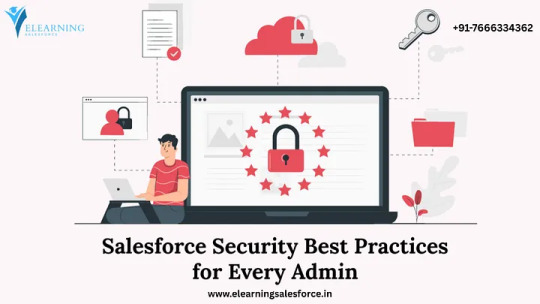
Discover the top Salesforce security best practices every admin must follow in 2025. Learn how to safeguard your org with the latest tools, user access controls, MFA, and more. A must-read guide to help protect sensitive business data in an evolving digital landscape.
#SalesforceSecurity#CyberSecurity2025#AdminBestPractices#SalesforceTips#MFA#UserAccessControl#CloudSecurity#SecureYourOrg#SalesforceTraining#SalesforceCRM#DataProtection#Salesforce2025#ZeroTrust#SalesforceCommunity
0 notes
Text
Salesforce Security Best Practices for Admins in 2025
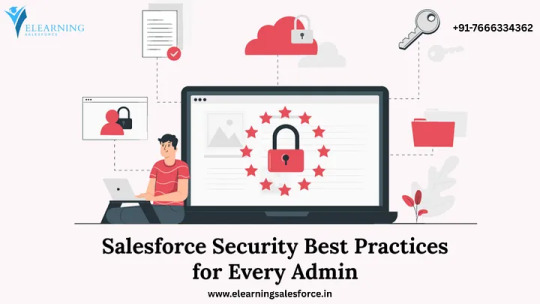
Discover the top Salesforce security best practices every admin must follow in 2025. Learn how to safeguard your org with the latest tools, user access controls, MFA, and more. A must-read guide to help protect sensitive business data in an evolving digital landscape.
#SalesforceAdmin#SalesforceSecurity#CyberSecurity2025#AdminBestPractices#SalesforceTips#MFA#UserAccessControl#CloudSecurity#SecureYourOrg#SalesforceTraining#SalesforceCRM#DataProtection#Salesforce2025#ZeroTrust#SalesforceCommunity
0 notes
Text
Clone Salesforce Objects, Fields & Validation Rules in Bulk – The Easy Way with BOFC
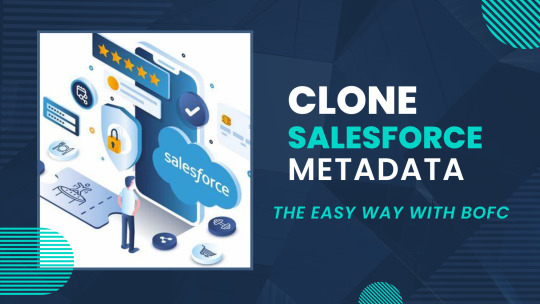
Salesforce admins and developers know the pain of repetitive configuration tasks. Whether you're setting up a sandbox, migrating to a new org, or simply duplicating a structure for a new business unit — cloning objects, fields, and validation rules manually is a time-consuming process.
Enter BOFC (Bulk Object Field Creator) — a powerful productivity tool designed to eliminate the tediousness of bulk Salesforce configuration.
🔄 The Challenge: Manual Cloning in Salesforce
Out-of-the-box, Salesforce does not provide a native way to bulk clone metadata elements like:
Custom objects and their fields
Validation rules
Record types
Field-level security
Page layouts
This typically involves a mix of manual clicks, change sets, or complex metadata API scripts — not ideal when time is tight.
✅ The BOFC Solution: Clone Everything in Just a Few Clicks
BOFC simplifies the entire process by allowing users to clone multiple elements at once, right from within Salesforce. Here’s what you can do with BOFC:
🔹 Clone Custom & Standard Objects:
Duplicate object definitions along with fields, record types, and relationships — perfect for sandbox creation or org replication. Read More
🔹 Clone Fields in Bulk:
Select and copy fields from one object to another with full control over field types, help texts, picklist values, and more. Read More
🔹 Clone Validation Rules:
Copy complex business logic rules from one object to another — maintaining your governance without extra effort.
🔹 Field-Level Security & Profiles:
Ensure cloned components maintain appropriate access by replicating security settings across profiles.
🧠 Why Use BOFC?
Save hours of manual work
Avoid errors and inconsistencies
No coding or deployment tools required
Works within Salesforce using an intuitive interface
🔍 Real Use Case:
A Salesforce admin needs to set up a new custom object with 50+ fields, similar to an existing object. Normally, this would take hours. With BOFC, it’s done in under 5 minutes — including cloning of fields, validation rules, and picklist values.
🛠️ Getting Started with BOFC
Install the BOFC package from AppExchange
Navigate to the BOFC app within Salesforce
Choose what you want to clone (objects, fields, rules, etc.)
Select source and destination
Click Clone — and you're done!
📈 Boost Your Salesforce Productivity
Whether you're a Salesforce Admin, Architect, or Consultant, BOFC is the go-to tool for speeding up your org setup and maintenance tasks.
👉 Try BOFC Today and take control of your Salesforce configuration with confidence.
#salesforce#appexchange#salesforce metadata#clone salesforce metadata#bulk clone objects#clone multiple objects
0 notes
Text
Master Your Career with a Comprehensive Salesforce Admin Training Course
With the dynamic contemporary and technologically advanced workers these days, Salesforce specialists are in extremely high demand. Salesforce, the leading Customer Relationship Management (CRM) platform globally, has truly transformed how businesses connect with their customers. Salesforce Admin is one of the integral parts in keeping such an environment running at its best to its full potential. If you want to break into the Salesforce community or build on previous skills, taking a Salesforce Admin Training Course can be a career-changer for you.
This article discusses the advantages, format, career opportunities, and why opting for a Salesforce Admin Training Course—more particularly from TechForce Academy—can be an intelligent and strategic decision.
What is Salesforce Administration?
Understanding the Role of a Salesforce Admin
Salesforce Administrators are custodians of a Salesforce environment. They maintain the system running and in operation, meeting user needs, and supporting business goals. Their role involves:
Managing user accounts and permissions
Tailoring the Salesforce platform to organizational requirements
By utilizing workflows, flows, and process builders, companies can streamline their operations and automate various business processes.
Running reports and dashboards
Troubleshooting and resolving issues
Training users on best practices
A skilled Salesforce Admin is the backbone of any business using CRM, making it simpler to bridge technology and people.
Why Learn Salesforce Administration?
The world of Salesforce is wide and evolving. With more and more companies implementing Salesforce, there's greater demand for experienced admins at a rock-solid pace. Here are the reasons it pays to know Salesforce Administration:
Strong demand: There are thousands of firms operating on Salesforce as a CRM, so there is continuous demand for Admins.
High paying wages: The average U.S. A Salesforce Admin can expect to earn between $80,000 and $120,000 annually.
Career adaptability: The skills that one learns from admin training are convertible to other career paths like Business Analyst, Consultant, or Developer.
Certifications bring legitimacy: Getting certified with Salesforce Admin Certification validates your proficiency to the desired employers.
Benefits of a Salesforce Admin Training Course
1. Structured Learning Path
A professional course offers a well-structured curriculum, ensuring learners grasp foundational concepts before advancing to more complex topics. With TechForce Academy, the course figure is designed by assiduity experts to make capability and confidence.
2. Hands-On Practice
Unlike theoretical learning, a Salesforce Admin Training Course emphasizes practical applications. You’ll work with real-world scenarios and Salesforce orgs to simulate job tasks.
3. Expert Mentorship
Guidance from professional trainers can be a significant determinant of learning and achieving competence in Salesforce. TechForce Academy trainers transfer professional experience into the classroom.
4. Community and Peers
Registering in a class offers access to a network of peers. The group becomes a valuable resource for collaboration, troubleshooting, and staying up-to-date.
5. Exam Preparedness
Preparation for Salesforce Administrator Certification is integrated within the course. Engaging in mock tests, quizzes, and revision sessions can significantly boost both readiness and confidence.
Why Choose TechForce Academy for Your Salesforce Admin Training Course?
Industry-Aligned Curriculum
TechForce Academy's Salesforce Admin course is tailored specifically to meet industry needs. The curriculum covers:
Salesforce fundamentals
Object and field-level security
Automation tools like Process Builder and Flows
Report and dashboard development
User and data management
AppExchange and third-party integration
Experienced Trainers
Instruction is given by professionals who are Salesforce-certified and provide comprehensive education, mentorship, and career development.
Flexible Learning Choices
Self-paced or instructor-led courses, you study at your own rate.
Certification Assistance
The course trains you very well for the Salesforce Certified Administrator exam through a lot of practice sessions and mentorship.
Career Coaching After The Course
TechForce Academy goes the extra mile by providing resume writing assistance, interview coaching, and job placement services.
Who Can Enroll for a Salesforce Admin Training Course?
Career Starters
You are new to the world of technology or willing to shift your career, and you desire an excellent way to get into the high-growth industry.
Working Professionals
Marketing professionals, business analysts, or IT professionals can enhance their skill set and shift to Salesforce roles.
Graduates and Students
Technology-oriented students who desire to stand out in the market will gain from this training course as an excellent addition to their portfolio.
What to Expect in a Salesforce Admin Training Course
Course Modules
It takes a few weeks for a normal training course and includes modules such as:
Introduction to Salesforce and Cloud Computing
Organization Setup and Configuration
User Management and Security Controls
Data Management and Import/Export Tools
Automation Using Workflows, Process Builder, and Flows
Reports and Dashboards
Change Management and Deployment Tools
Exam Preparation and Practice Tests
Real-Time Projects
Project expectations based on actual scenarios and issues faced in a corporate setting.
Assessment and Feedback
Regular assessments play a crucial role in ensuring continuous improvement and a solid understanding of key concepts.
Career Scope After Salesforce Admin Training
High Employability
Salesforce Admins are in high demand across sectors such as Finance, Healthcare, IT, and Retail.
Career Growth
Being an Admin can lead to careers such as:
Salesforce Business Analyst
Salesforce Consultant
Salesforce Developer
CRM Manager
Technical Project Manager
Global Opportunities
Salesforce professionals are highly sought after around the world.. With increasing remote work opportunities, your options are endless.
Final Thoughts
A Salesforce Admin Training Course isn't an educational experience alone—it's an investment in your future. As companies continue to base decisions on data and customer-centric strategies, qualified Salesforce Admins are needed.
Choosing a reputable platform like TechForce Academy ensures not just top-tier education but also long-term career support. So whether you’re starting fresh or leveling up, now is the perfect time to explore the Salesforce ecosystem.
0 notes
Text
Supercharge Your Sales: Building a High-Performance Salesforce Org with Aptimized
In the fast-paced world of sales, staying ahead means embracing tools that streamline operations and drive results. Enter Salesforce (SFDC) — a powerhouse CRM platform designed to revolutionize your sales processes. But technology alone isn't the silver bullet; it's about how you implement and leverage it. That's where Aptimized steps in.
Why Launch a New Sales Org with Salesforce?
Starting fresh with Salesforce offers a unique opportunity to:
Streamline Sales Management: From lead tracking to opportunity management, Salesforce centralizes your sales activities, providing a clear view of your pipeline.
Customize Dashboards: Tailor your dashboards to reflect key performance indicators that matter most to your business.
Automate Routine Tasks: Reduce manual workloads with automation, allowing your sales team to focus on closing deals.
Scale with Ease: As your business grows, Salesforce adapts, ensuring your sales processes remain efficient and effective.
Aptimized's Proven Approach to Salesforce Implementation
At Aptimized, we understand that every business is unique. Our implementation strategy is designed to align Salesforce with your specific goals:
1. Strategic Planning & Discovery
Needs Assessment: We delve deep into your sales strategy to identify challenges and opportunities.
Process Mapping: Analyzing your current workflows helps us pinpoint areas for improvement.
Goal Setting: We establish clear KPIs to measure the success of your new sales org.
2. Custom Configuration
Sales Cloud Optimization: We tailor Salesforce features to match your sales processes.
Automation Implementation: From lead scoring to follow-ups, we automate tasks to enhance efficiency.
Custom Reporting: Gain real-time insights with reports designed to inform strategic decisions.
3. Data Migration & Integration
Secure Data Transfer: We ensure a smooth transition of your existing data into Salesforce.
System Integration: Salesforce is connected with your existing tools, creating a cohesive tech ecosystem.
Validation: Post-migration, we verify data accuracy to maintain integrity.
4. Training & Change Management
End-User Training: We equip your team with the knowledge to utilize Salesforce effectively.
Documentation: Comprehensive guides support ongoing learning and reference.
Ongoing Support: Our team remains available to assist with any post-implementation needs.
The Aptimized Advantage
Choosing Aptimized means partnering with experts who are committed to your success. Our deep understanding of sales processes, combined with technical proficiency, ensures your Salesforce implementation is not just functional but transformative.
Ready to elevate your sales organization? Contact Aptimized today to begin your journey towards a more efficient, data-driven sales future.
0 notes
Text
Transforming Salesforce Orgs with Managed Services
Description: Managed services are revolutionizing Salesforce organizations by shifting the focus from routine maintenance to strategic innovation. By leveraging Salesforce managed services, businesses can enhance system efficiency, reduce operational costs, and drive business growth. This approach ensures continuous improvements, security enhancements, and expert support, helping organizations stay ahead in the competitive market. Explore how Salesforce optimization through managed services can streamline your CRM and maximize ROI.
0 notes
Text
Realizing the True Potential of Salesforce Metadata
Salesforce metadata helps you reach next-level flexibility, efficiency, and customization of your org. However, you will be amazed to know that most Salesforce users remain unaware of the full potential and power of metadata.
Utilizing Salesforce metadata helps organizations personalize their org according to specific business needs, promoting improved user experience. Unlocking Salesforce’s true potential opens the door to endless opportunities. It lets you create custom objects, fields, and relationships that align perfectly with your business processes and boost productivity.
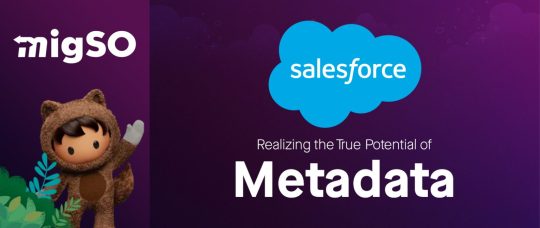
Let’s first understand the concept of Salesforce metadata before unveiling its true potential.
What is Salesforce Metadata?
Salesforce metadata refers to the data that defines other data. In other words, Salesforce metadata is a tool that executes your Salesforce org’s structure, configuration, and functionalities. It determines your Salesforce object’s behavior and the “look and feel” of your Salesforce org. Metadata carries all the essential elements that facilitate the customization of Salesforce orgs, like object definitions, business logic, layouts and UI components, automation and integration, and Security settings.
Unleashing the Power of Salesforce Metadata
Let’s have a look at the importance of Salesforce metadata and figure out how it helps you maximize your productivity-
Customization: Metadata allows you to customize your Salesforce org extensively according to your unique business needs. It authorizes you to tailor everything from data models to user interfaces. However, you may encounter errors if you fail to secure these metadata sets.
Efficiency: Metadata-driven tools like workflows, validation rules, and process builders promote automation, ultimately enhancing operational efficiency by reducing manual efforts.
Scalability: Businesses evolve with time, and so do their needs. Because of its flexibility, adding new features or functionalities to your Salesforce instance becomes easy with metadata. Moreover, metadata enables businesses to expand and adapt to changing needs by defining the platform’s structure, configurations, and customizations.
Consistency: In a real-life scenario, your team won’t work on a single org but on multiple Salesforce org. There are chances of executing errors when your team works with different Salesforce orgs. That’s why maintaining consistency between orgs is vital as it streamlines team efforts. By defining and enforcing data structures, security settings, and business rules businesses ensure consistency across different environments.
Maintenance: There’s always a scope for errors in the development phase. However, your DevOps team needs to be familiar with the root cause to fix it immediately. This is where they can utilize metadata, a useful tool to identify, interpret, and resolve issues effectively.
Real-World Applications of Salesforce Metadata
Customizing Sales Processes: The sales rep can create custom sales stages, fields, and workflows with Salesforce metadata. With such levels of customization, tracking deals at distinct stages becomes easy, allowing your sales team to close more deals efficiently.
Improving Customer Service: Your service team can use metadata to specify custom case types, priority levels, and automated escalation rules. When customer issues are resolved in a timely manner, you can expect improved customer satisfaction.
Personalized Marketing Campaigns: With the introduction of custom campaign objects and fields, tracking your marketing campaign performance has become much easier. Your marketing team can easily access metadata-driven reports and dashboards to get comprehensive details about their marketing campaigns. Such tools promote strategic decision-making for businesses.
What is migSO and How Does it Unlock the True Potential of Salesforce Metadata?
Although metadata forms a critical part of a Salesforce org, managing it is ineffective and tedious, leading to high costs, low efficiency, and increased risk.
This is why our experts developed an ultimate solution—migSO—that helps you get more from your metadata. migSO stands for Migration Salesforce Object, a one-stop destination for all your Salesforce metadata cloning, exporting, and managing needs. It empowers you to seamlessly migrate metadata from one Salesforce org to another in no time. With migSO, one can unlock the true power of metadata operations and get the best out of their CRM.
Who Are We?
Tech9logy Creators is a well-established Salesforce App Development Company with over 10 years of experience. Our certified professionals share great expertise in Salesforce App Exchange and develop diverse apps while adhering to its guidelines. Opt for our Salesforce App Development Services to get a customized app for your enterprise today.
Contact us for more information.
#Salesforce#Salesforce Metadata Migration App#Salesforce Migration App#Salesforce Metadata App#migSO#Salesforce Metadata Management#Clone Salesforce Metadata#Export Salesforce Metadata
0 notes
Text
Mastering Twilio Integration with Salesforce: A Step-by-Step Guide
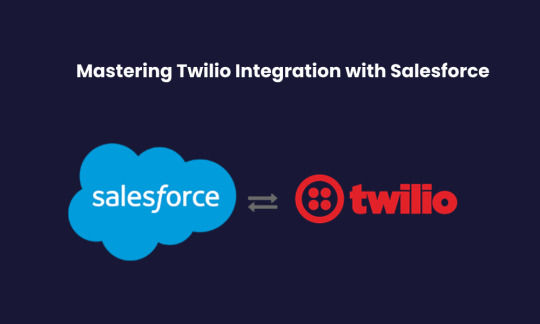
In today’s fast-paced world, communication is the key to building successful relationships with customers. With Salesforce, businesses can manage their customer relationships effectively, and by integrating Twilio, you can take your communication efforts to the next level. Twilio, a cloud communication platform, enables businesses to send messages, make calls, and even engage customers through SMS, voice, and other communication channels.
Integrating Twilio with Salesforce creates a seamless experience for customer interactions directly from the Salesforce platform, empowering sales and support teams to engage with customers in real-time. In this blog, we will walk you through the process of mastering Twilio integration with Salesforce.
Why Integrate Twilio with Salesforce?
Improved Customer Engagement: Send SMS, voice calls, and emails directly from Salesforce, enabling efficient communication with your customers.
Streamlined Workflows: Automate repetitive tasks, such as sending SMS notifications or reminders, and enhance productivity.
Enhanced Reporting & Analytics: Get detailed insights into communication metrics right within Salesforce, helping you make informed decisions.
Omnichannel Communication: Whether it’s through messaging, calls, or notifications, Twilio allows you to use a single platform for all customer interactions.
Prerequisites for Twilio-Salesforce Integration
Before diving into the integration process, ensure that you have the following:
A Salesforce Developer Account (for testing purposes).
A Twilio Account with access to API credentials (Account SID, Auth Token).
Familiarity with Apex (Salesforce’s programming language) for creating custom logic.
Step-by-Step Guide to Twilio Integration with Salesforce
Step 1: Set Up Your Twilio Account
First, sign up for a Twilio account if you haven’t already done so. After logging in, you will receive your Twilio API credentials:
Account SID
Auth Token
These credentials will be used for authentication when making API calls.
Step 2: Install Twilio’s Salesforce App (Optional)
Twilio offers a pre-built app called Twilio for Salesforce on the Salesforce AppExchange. Installing this app simplifies the integration process and provides a user interface for managing communication.
Go to the Salesforce AppExchange.
Search for Twilio for Salesforce and click on Get It Now.
Follow the installation instructions to add the app to your Salesforce org.
This app includes features like SMS messaging, call logs, and the ability to create communication templates within Salesforce.
Step 3: Create a Twilio Service in Salesforce
If you want more control over the integration or need custom functionality, you can set up Twilio within Salesforce using Apex code and REST API.
Create a Remote Site Setting:
In Salesforce, navigate to Setup > Security > Remote Site Settings.
Click on New Remote Site and enter a name (e.g., Twilio API).
Set the URL to https://api.twilio.com.
Save the remote site.
Create an Apex Class to Handle Twilio Requests:Create a new Apex class to send and receive messages using the Twilio API. This class will include logic to send SMS messages, make calls, or gather information from Twilio.
Example Apex Code to Send an SMS:
apexCopy codepublic class TwilioIntegration { public static void sendSMS(String to, String message) { String accountSid = 'your_account_sid'; String authToken = 'your_auth_token'; String from = 'your_twilio_phone_number'; HttpRequest req = new HttpRequest(); req.setEndpoint('https://api.twilio.com/2010-04-01/Accounts/' + accountSid + '/Messages.json'); req.setMethod('POST'); req.setHeader('Authorization', 'Basic ' + EncodingUtil.base64Encode((accountSid + ':' + authToken).getBytes())); req.setBody('To=' + EncodingUtil.urlEncode(to, 'UTF-8') + '&From=' + EncodingUtil.urlEncode(from, 'UTF-8') + '&Body=' + EncodingUtil.urlEncode(message, 'UTF-8')); Http http = new Http(); HttpResponse res = http.send(req); System.debug(res.getBody()); } }
This Apex class uses the Twilio API to send an SMS message. Customize the code based on your use case (e.g., adding voice functionality).
Step 4: Configure Custom Fields and Objects in Salesforce
Depending on how you want to track communication, you may need to set up custom fields or objects within Salesforce. For instance, you can create:
Custom Fields on leads or contacts to store the phone numbers and communication logs.
Custom Objects for tracking SMS or call history associated with records.
Step 5: Automate Communication with Salesforce Workflows or Flows
Salesforce’s workflow automation tools (such as Flows, Process Builder, or Apex Triggers) can be used to automatically send messages based on specific criteria.
For example, create a Flow that sends an SMS reminder to a customer when their appointment is coming up. You can trigger the Flow when the appointment date is approaching, and Twilio will send the SMS directly from Salesforce.
Step 6: Test Your Integration
Before rolling out the integration to your team, it’s crucial to thoroughly test it to ensure everything works as expected. Test sending SMS, making calls, and logging the communication in Salesforce. Make sure the API calls are successful and that messages are being sent and logged correctly.
Step 7: Monitor and Optimize
Once the integration is live, regularly monitor the performance of your communication channels. Twilio offers a dashboard where you can track message delivery status, call logs, and other analytics. Use this data to optimize your customer communication strategies.
Conclusion
Integrating Twilio with Salesforce is a powerful way to enhance your customer engagement efforts. By automating communication, tracking interactions, and providing real-time updates, you can improve the overall experience for your customers and streamline internal workflows.
Whether you use Twilio’s pre-built app or go the custom route, mastering the integration allows you to unlock new possibilities for customer communication. So, dive in, experiment with the integration, and see the impact it can have on your Salesforce workflows!
#salesforce consultant in chicago#salesforce consulting in chicago#salesforce implementation partner in chicago#salesforce consulting partner in chicago#salesforce partner in chicago#salesforce consulting partner in new york#salesforce service in new york#new york salesforce consultant partner#top salesforce consultant company in new york#best salesforce consulting and implementation partner in new york
0 notes
Text
Streamlining Business Operations with a Robust Salesforce Org Strategy
Introduction Efficient business operations demand structured workflows and seamless data management. Salesforce, a global leader in CRM platforms, offers tools to enhance organizational performance. Central to this effort is adopting a robust Salesforce Org Strategy, supported by the Salesforce Framework and CRM implementation services.
The Role of Salesforce Org Strategy A Salesforce Org Strategy is not just about setting up the platform; it’s about aligning Salesforce to business objectives. It involves deciding between single or multi-org models, ensuring data security, and defining governance protocols. A clear strategy ensures that your Salesforce implementation scales with your business.
Salesforce Framework in Action The Salesforce Framework provides a foundation for customization and scalability. From workflow automation to app development, this framework ensures that the CRM system evolves alongside business needs. Coupled with the right strategy, it enhances data flow, user adoption, and system performance.
Leveraging CRM Implementation Services Proper implementation is key to realizing Salesforce’s potential. CRM implementation services offer expertise in configuring, integrating, and deploying Salesforce to fit your specific needs. This process reduces the risk of errors and enhances user adoption, ensuring maximum return on investment.
Conclusion A well-defined Salesforce Org Strategy, paired with the Salesforce Framework and expert CRM implementation services, empowers businesses to optimize operations, drive customer engagement, and achieve long-term success.
0 notes
Text
0 notes
Text
Salesforce LWC (Lightning Web Component): A Complete Guide

Salesforce, a leader in customer relationship management (CRM), consistently innovates to help businesses automate processes, manage customer relationships, and improve team collaboration. One of its key advancements is the Lightning Web Component (LWC), a framework designed to simplify and streamline Salesforce development. This article will explore what Salesforce LWC is, how it works, and why it's a game-changer for developers and businesses alike. Let’s dive into everything you need to know to get started with Salesforce LWC and maximize its potential in your Salesforce projects.
What is Salesforce LWC?
Salesforce Lightning Web Component (LWC) is a lightweight framework developed by Salesforce that allows developers to create high-performing, responsive, and reusable components on the Salesforce Lightning Platform. LWC is built using standard web components technology and aligns with the modern JavaScript ecosystem, which makes it highly efficient and compatible with other web standards.
Why Did Salesforce Introduce LWC?
Prior to Lightning Web Components, Salesforce developers used Aura components for building custom Salesforce applications. However, with the evolution of web standards and the increasing demand for faster, more reliable web applications, Salesforce LWC emerged as a more efficient framework. This new approach leverages native browser capabilities to enhance performance, simplify code, and improve the user experience.
Core Features of Salesforce LWC
Standards-Based: LWC is based on modern web standards, including ES6+ JavaScript and custom elements.
Component Reusability: Components created in LWC are highly reusable and scalable.
Efficient Data Binding: With reactive properties, data in LWC synchronizes seamlessly across components.
Security: LWC integrates with Salesforce Locker Service, ensuring data security within the components.
Customizable UI: Using the Lightning Design System (SLDS), developers can create responsive and customizable UI components.
Why Should You Learn Salesforce LWC?
As businesses shift towards digital transformation, the demand for skilled Salesforce developers proficient in Lightning Web Components has soared. Learning LWC opens up a plethora of opportunities in Salesforce development and enhances a developer’s capabilities in creating custom applications on the Salesforce platform.
Key benefits include:
Higher Performance: Components created in LWC are faster and more lightweight.
Career Growth: Skills in Salesforce LWC make developers more marketable and open up new career opportunities.
Compatibility with Web Standards: LWC uses modern JavaScript, making it easier for developers to learn and apply skills beyond Salesforce.
Setting Up Salesforce LWC: A Step-by-Step Guide
1. Set Up Salesforce Developer Org
To start developing with LWC, you first need a Salesforce Developer Org. If you don’t already have one, sign up on the Salesforce Developer website. This is a free platform where you can access all necessary tools and resources.
2. Install Salesforce CLI
The Salesforce CLI (Command Line Interface) is essential for creating, testing, and deploying LWC components. To install, visit the official Salesforce documentation for the latest version of the Salesforce CLI.
3. Use Visual Studio Code as Your IDE
Visual Studio Code (VS Code) is the recommended IDE for Salesforce development. The Salesforce Extension Pack for VS Code includes tools that make Salesforce LWC development straightforward.
Download and install Visual Studio Code.
Install the Salesforce Extension Pack.
4. Create a New LWC Component
Once you have set up your environment, creating an LWC component is easy. Run the following command in the Salesforce CLI:
bash
Copy code
sfdx force:lightning:component:create -n HelloWorld -d force-app/main/default/lwc
This command generates a basic HelloWorld component in your project directory.
5. Deploy and Test Your LWC Component
Once your component is created, you can deploy it to your Salesforce Org and test it. Use the following command to deploy the component:
bash
Copy code
sfdx force:source:push
You can add your component to a Lightning App or Lightning Record Page in Salesforce to see it in action.
Understanding the LWC Lifecycle Hooks
Lifecycle hooks are events triggered at different stages of a component’s lifecycle in LWC. They help developers manage the component's behavior effectively. Below are the key lifecycle hooks in Salesforce LWC:
connectedCallback(): Called when the component is added to the DOM.
disconnectedCallback(): Called when the component is removed from the DOM.
renderedCallback(): Called after every render, useful for post-render tasks.
errorCallback(error, stack): Handles any errors thrown by the component.
Salesforce LWC vs Aura Components: Key Differences
Feature
LWC
Aura Components
Standard Compliance
Based on web standards
Proprietary to Salesforce
Performance
Higher performance due to native DOM
Lower performance
Learning Curve
Easier with modern JavaScript
Steeper learning curve
Code Reusability
Higher reusability
Limited reusability
Why Choose LWC Over Aura?
The Aura framework was revolutionary when it was first introduced, but Salesforce LWC offers a more efficient, future-proof approach. With standardized web components, Lightning Web Components provide faster loading times, a simplified syntax, and easier maintenance.
Best Practices for Developing with Salesforce LWC
Use Lightning Data Service (LDS): Whenever possible, use LDS for data access instead of Apex, as it offers performance advantages.
Keep Components Small: Build modular components that are focused on single tasks, making them easier to maintain.
Use Public Properties Sparingly: Limit the use of public properties to avoid unintended changes.
Avoid Using jQuery: As LWC is standards-based, jQuery is often unnecessary and can lead to performance issues.
Frequently Asked Questions about Salesforce LWC
1. What programming languages are used in Salesforce LWC?
Salesforce LWC primarily uses JavaScript and HTML, with support for CSS for styling. The components are compatible with ES6+ JavaScript, making it easy for web developers to get started.
2. Can I use Salesforce LWC with existing Aura components?
Yes, Salesforce LWC can interoperate with Aura components. You can embed LWC within an Aura component and vice versa, making it easier to transition legacy applications to Lightning Web Components.
3. What are the main advantages of Salesforce LWC over traditional JavaScript?
The main advantages include native DOM access, faster rendering times, simplified syntax, and higher reusability across different components and projects.
Top Tools and Resources for Learning Salesforce LWC
Salesforce Developer Documentation: Salesforce’s official developer documentation provides in-depth tutorials and API references.
Trailhead: Salesforce’s free learning platform, Trailhead, offers comprehensive courses on LWC.
YouTube and Blogs: Numerous YouTube channels and blogs provide tutorials on Salesforce LWC, from beginner guides to advanced concepts.
GitHub: Check repositories on GitHub for sample projects and open-source LWC components that you can use in your projects.
Salesforce LWC in Real-World Applications
Salesforce LWC has found its way into various industries and use cases. From automating sales processes to creating custom user interfaces, LWC is pivotal in making Salesforce a more flexible and powerful CRM platform. Businesses leverage LWC to improve their user experience and performance, giving them an edge in today’s competitive landscape.
Case Study: LWC for E-Commerce Customer Support
An e-commerce company integrated Salesforce LWC into its customer support system, allowing agents to resolve customer queries faster and more efficiently. The company noticed:
30% increase in query resolution speed.
Higher agent productivity due to simplified workflows.
Improved customer satisfaction through responsive and personalized support.
Conclusion: Mastering Salesforce LWC
Salesforce LWC is not just a technical framework; it’s a powerful tool that enables developers to build high-performance applications on the Salesforce platform. With standards-based web components and enhanced efficiency, Salesforce LWC is becoming the go-to framework for Salesforce developers. Embracing Salesforce LWC can lead to career growth, business efficiency, and improved user experiences in applications.
0 notes
Text
Salesforce Development with ODS Phase-II Sandbox SchedulingShow drafts
Understanding ODS Phase-II Sandboxes An ODS Phase-II sandbox is a Salesforce environment specifically designed for development and testing purposes. It's a replica of your production org, but with certain limitations to ensure data security and prevent accidental changes to production data.
Scheduling salesforce ODS Phase-II Sandboxes Scheduling your ODS Phase-II sandbox can be beneficial for several reasons: Efficient Resource Allocation:
By scheduling sandboxes, you can ensure that they are only active when needed, minimizing resource consumption. Data Security: Regularly refreshing your sandbox helps maintain data accuracy and prevents the accumulation of outdated or sensitive information. Improved Development Workflow: A scheduled sandbox can help streamline your development process by providing a consistent and predictable environment.
0 notes
Text
Interview Questions: External Objects
Interviewer: What is the use of External Objects Interviewee: When we need to show the data from the external sources without pulling the data actually into the salesforce org and just replication of the data on demand that’s when we can use the External objects. Interviewer: What is the pros and cons of Using External Objects Interviewee: Pros: 1. We can replicate the data securely from the…
View On WordPress
#Cross-Org#External Data sources#External Objects#OData#saleseforce#Salesforce#Salesforce Connect#Salesforce Connect Odata#Salesforce External Objects#trailhead
0 notes
Text
Cost-Benefit Analysis of Salesforce Integration User Licenses
Introduction
Salesforce integration user licenses are a new type of license that provides API-only access to the Salesforce platform. This means that users who are assigned this license type can only access data and functionality through the API, not through the user interface.
Benefits of Salesforce Integration User Licenses
There are several benefits to using Salesforce integration user licenses:
Improved security: By restricting users to API-only access, you can reduce the risk of unauthorized access to your Salesforce data.
Reduced costs: Enterprise Edition, Unlimited Edition, and Professional orgs are automatically provisioned with five Salesforce Integration user licenses at no additional cost. Additional Salesforce integration user licenses are significantly cheaper than full user licenses, at only $10 each!.
Increased efficiency: API-based integrations can be more efficient than UI-based integrations.
Enhanced scalability: API-based integrations can be easily scaled to meet your growing needs.
0 notes